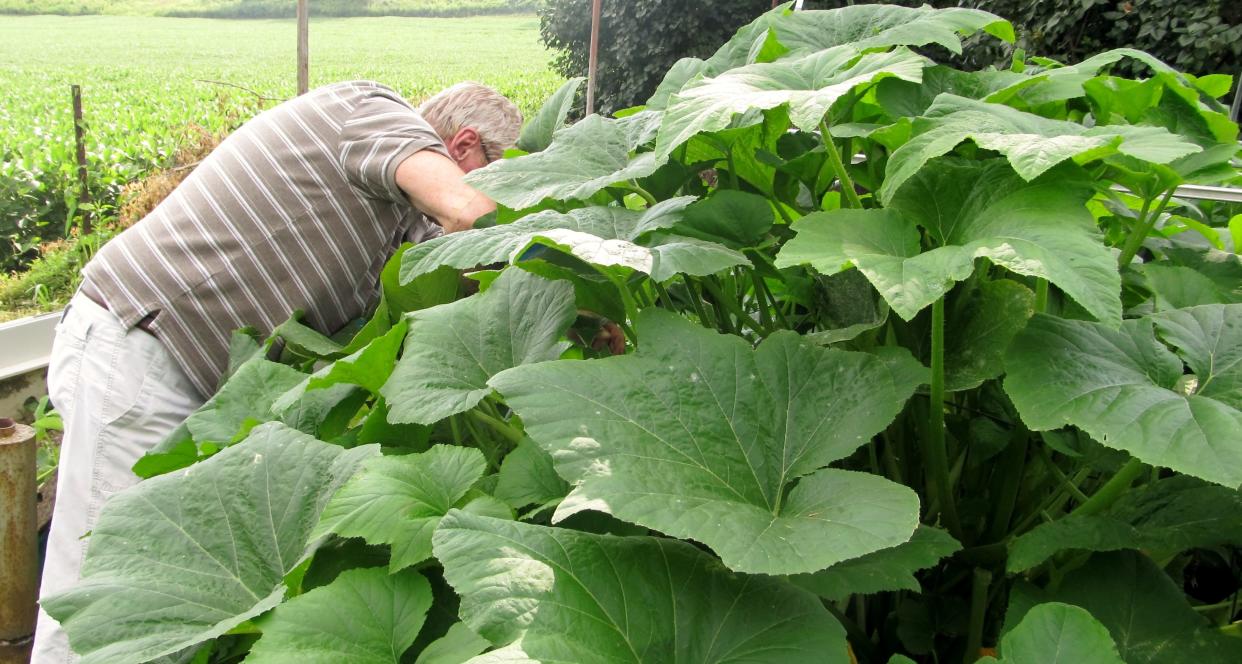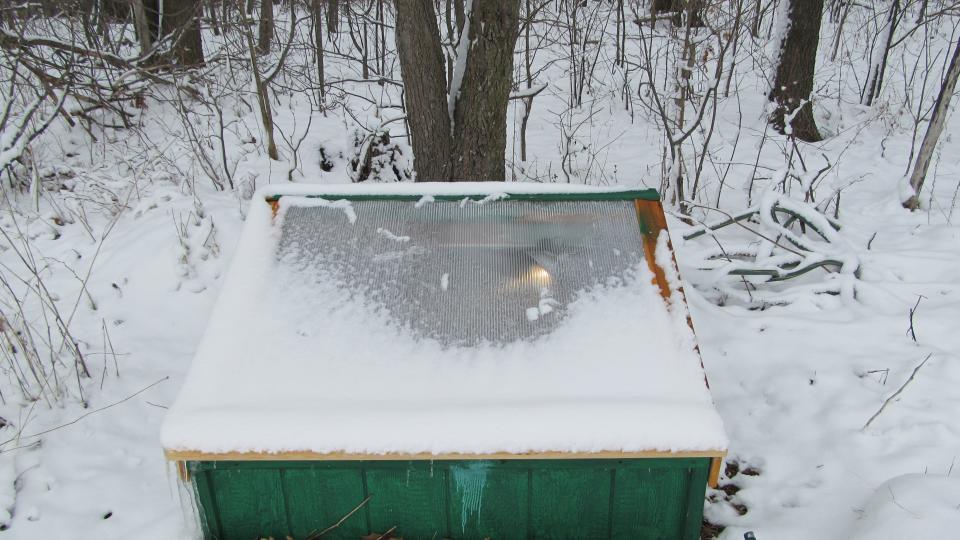A Stroll Through the Garden: Raised beds make life easier

First time I saw this kind of idea was about 25 years ago and it was New Year’s Eve. It was dark but we could see from a few lights. My folks have a concrete patio behind their house and my dad had shoveled a path on the patio to the raised bed, hot frame. Dad reached down towards this little handle on a door and lifted this door up. You could see he had shoveled the snow off the top of the raised bed. He reached down into the raised bed with some scissors and cut a little bib lettuce, some spinach, some Swiss chard tops, and some parsley and put all the cuttings into a large bowl. Mom did not spend much time cleaning and cutting the greens but put them over the rest of the salad she had prepared. Then we ate a fresh salad on New Year’s Eve.
A lady from the Lexington Public Library called me a few years ago and asked me about the topics people would find interesting? I just mentioned raised bed gardening. She then said to me, “What is so special about raised bed gardening that would cause me to think that any gardener would want to put their efforts into working in a raised bed?” Seriously, I just left her there and did not go into any depth with regards to the program.
Today I was doing laps in the pool and talked to a lovely lady about raised bed gardens. She asked me about my experience with raised beds and if I could help her through some questions.
I have been gardening for a long time and my life has been dramatically easier since I started doing this form of gardening. But what is still amazing is that my parents both gardened even at 87 and 85, meaning that we all should be able to take up this very special hobby and that gets me excited. Being older I find that I don’t get very excited about many things, but this raised bed idea is very different.

Let’s look at some of the basics behind raised beds. The basic premise behind a raised bed is that the soil is above ground level. This can be done very simply by nailing three untreated 1” x 6” x 8’ long boards to two untreated 2” x 4” x 24” boards forming a panel. Make two panels like this. The second step would be to cut more 1” x 6” x 4’ untreated boards and nail the six four-foot boards to each end forming a rectangle. Once you have formed this rectangle you will have 6 inches at the top, then cut an angle on these four 2” x 4” boards. This is where you would turn the frame over and secure it in the soil. Once you have secured the frame in place, you start filling the space in the frame with the soil. This is a basic raised bed. As you might guess there are many variations.
The main reason why I don’t recommend using treated lumber is that the manufacturers place the boards in a pressurized chamber and put some serious toxins inside the chamber in some of the processes and force these toxins into the grain of the wood. These toxins prevent the wood from rotting for an extended period of time, which means these compounds won’t leach out of the wood right away — but they will come out in some form over time. There are at least 40 different known processes and I try to avoid using any materials that would have a chance of leaching into the food that I might eat. Composite materials are also a little different in that composites will last and provide the structure that a raised bed would need.
Here is a little twist that might solve the problem of having to replace the untreated lumber every few years: Using treated lumber, composite, or cedar as the frame would work if you had a barrier separating the soil from the wood. I feel it would be safest to use a plastic liner or a pond-type liner that is open at the bottom of the raised bed to allow the water to drain. The key is that the soil is not exposed to the wood inside the raised bed.
To answer the lady's question about the benefits of a raised bed, one of the benefits is that you don’t have to bend over very far to work in the garden as you would in a ground-level bed. I like this basic idea of saving my back. For older folks this idea by itself may mean you won’t have to give up gardening. Because you don’t walk on the soil in these raised beds you don’t get the problems with the soil compaction. The beds tend to be warmer than in-ground beds and can be planted earlier and the plans can stay in the beds longer. By planting the seeds more densely you can prevent weeds easier, blocking them out of the bed. This is just the start. More next week.
We have had a few days that have been really nice, and I hope you will have a good walk through your garden this week. If you see some issues that need some help, send me an e-mail at ericlarson546@yahoo.com and I shall answer them as best as I can. I shall start my blog soon at ohiohealthyfoodcooperative.org and leave some links to the column where you could leave some comments. Thank you for your questions.
Eric Larson of Jeromesville is a veteran landscaper and gardening enthusiast and a founding board member of the Ohio Chapter of Association of Professional Landscape Designers. He encourages your gardening questions by sending an email to ewlarson546@yahoo.com.
This article originally appeared on Mansfield News Journal: A Stroll Through the Garden: Raised beds have many advantages

